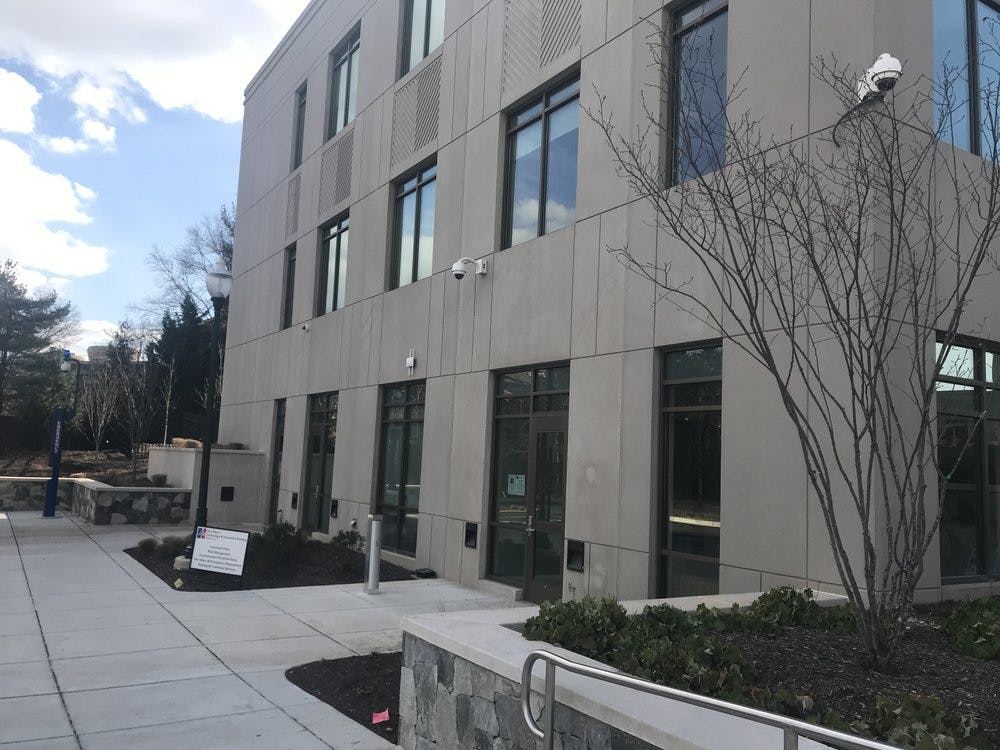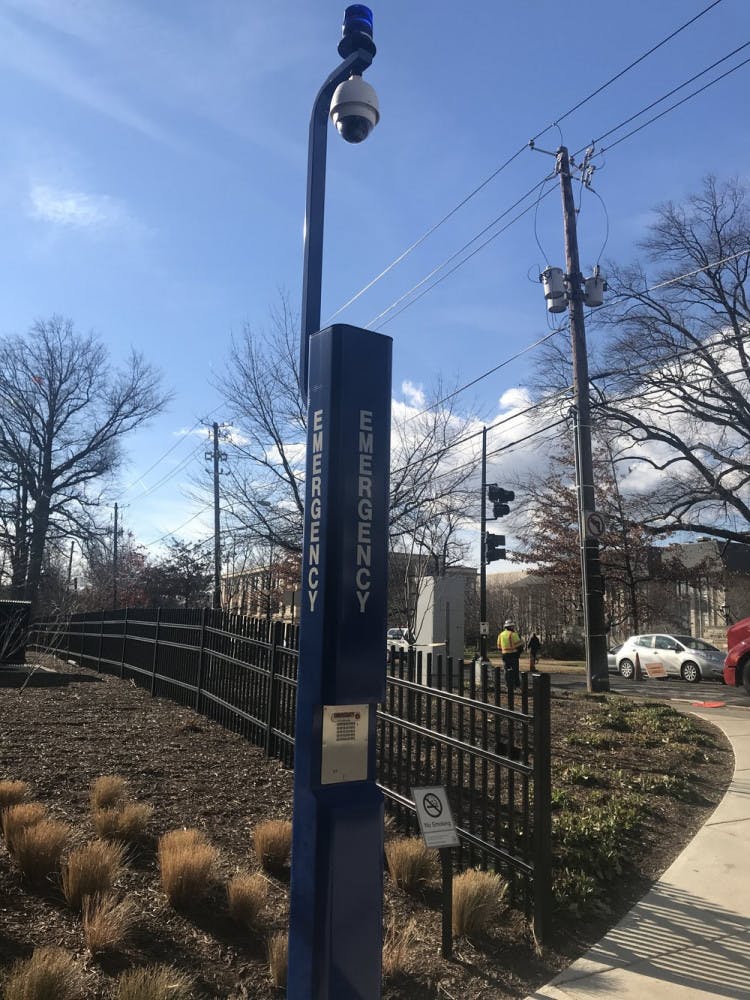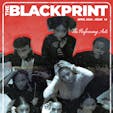BY: LAUREN LUMPKIN

Photo by Lauren Lumpkin
American University is a different school than it was last year. When you walk through campus, you can see it. Posted on the quad and roaming through the hallways of the Mary Graydon Center, there is something here that was not before.
The university this semester increased its Public Safety presence on campus. Last semester it was common to see an officer patrol the lobby of a residence hall, but now it is not unusual to see several officers each day.
This is intentional. Vice President of Campus Life Dr. Fanta Aw said Public Safety has made a point to increase its visibility.
This measure was introduced shortly after confederate flags posters with cotton stalks taped to them were plastered around campus. Amid concerns about students' safety, university police have assumed a bigger role on campus.
"It's not that we didn't have a person patrolling this area, or this area or this area before," said Assistant Vice President of University Police Services Phillip Morse, "it's that now we try to make [officers] a little more visible."
While the number of officers has not increased, Public Safety's presence has. The department this semester moved to a larger facility below the Don Myers Technology and Innovation Building, equipped with a 24-hour call center and situation room. There is also a single button that can remotely lock down buildings in the event of an active shooter. Morse said the expansion was made to accommodate a growing campus, which includes recent additions like East Campus and the Spring Valley building.
AU has also increased the number of surveillance cameras on campus to 600, said Morse. In addition to the current 56 emergency phones on main campus – 20 blue-lit towers with emergency phones and 36 bright yellow boxes with built-in phones – five more towers will be added next semester.
Students can feel the effects of these security measures. Junior Jozette Allah-Mensah said she is happy with Public Safety's response.
"I've definitely noticed more officers. I see at least two every day," said Allah-Mensah. "Especially when I'm walking at night, I always see cop cars around. It's just nice that [Public Safety] followed through…when they said they were going to up their presence, I was like, really? But they really did."

Photo by Lauren Lumpkin
The university is performing a lighting assessment to determine where more outdoor lamps are needed, particularly areas like the Woods-Brown Amphitheatre that are particularly dark at night, said Aw. University officials are also considering locking certain buildings after-hours and requiring community members swipe their AU IDs for access.
But, to say planting more officers and installing lights around campus will make students feel safer is overly-simplistic. Only 49 percent of Black students feel safe on campus, compared to 75 percent of white students, according to Campus Climate Survey data shared at a community meeting on Oct. 19.
Addressing this problem looks different for each community. Police – whether working for a university or a city – have historically had a bad reputation with students, especially young Black ones.
"What could be a signal of safety for one community could denote a completely different thing [to another community]," said Aw. "So things like increased university police presence, we want to be very mindful how, based on historical relationships, one group saying increase the number of police, for another, could have a complete reverse effect based on the nature of the relationship and based on history."
Black students have complained for years about being targeted by Public Safety officers. Sophomore Ofonime Idiong said she knows someone personally who has been profiled by officers.
"One of my friends was telling me she was walking on campus one night and Public Safety came up and stopped her, and asked her if she went to AU, is she an actual student and asked to see ID," said Idiong.
The student who was stopped said she does not feel comfortable speaking about the interaction.

Idiong said she thinks Public Safety is targeting the wrong people. When security footage from the Mary Graydon Center showed the suspect in the confederate flag incident dressed in construction gear, many students questioned how he gained entry so easily.
"So like [Public Safety is] asking students to see ID," said Idiong, "but can't ask someone in fake construction gear why they're here on campus?"
Morse knows this is a problem. He said Public Safety has plans to improve relationships with students, including developing a residence hall liaison program, continuing to host its annual fall safety fest and working with the Care Network to keep helping students in crisis.
However, some students are still skeptical. Junior Antonio Ãlvarez-Ramierz said Public Safety needs to do more to protect students of color at AU.
"Where was Public Safety when a student was kidnapped and sexually assaulted by a fake Uber driver," he asked. "Where was Public Safety when someone hung nooses on lamps in the middle of the quad? It seems to me like Public Safety should spend more time thinking of ways to protect vulnerable students, and less time harassing students of color walking to and from the library at night."


